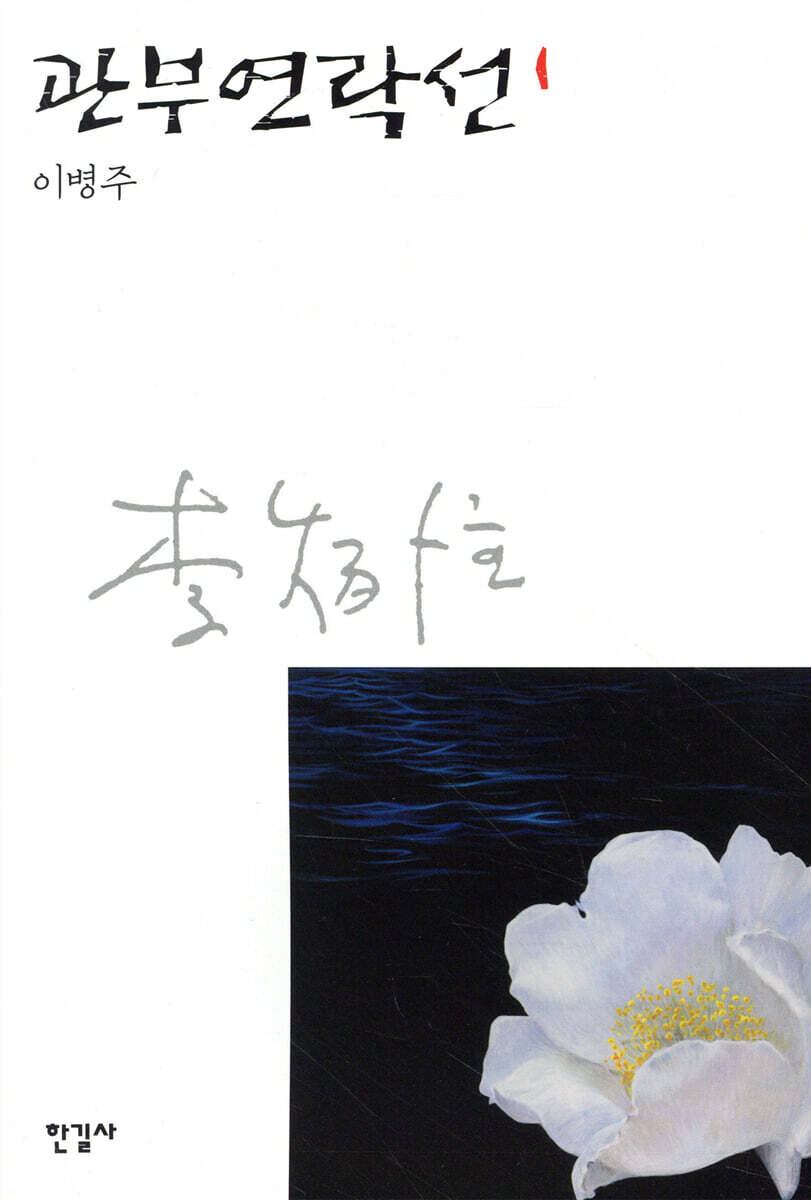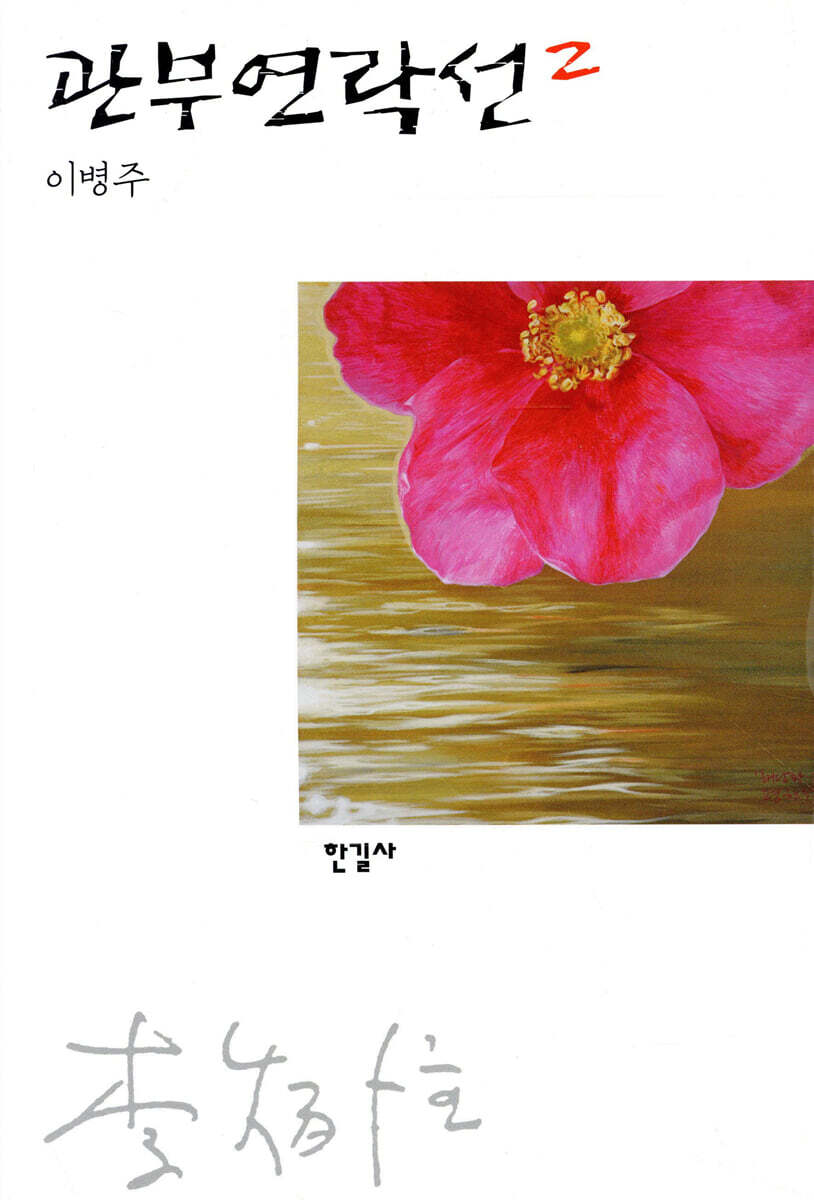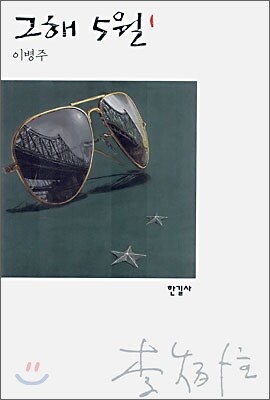도입부
이병주(李炳注, 1921~1992)는 한국의 소설가, 언론인이다. 철저한 자료 수집과 취재에 바탕을 두고 한국 현대사를 소설을 통해 충실하게 되살려낸 대표적인 작가이다. ‘한국의 발자크’1)라는 별명을 가지고 있으며 다작의 작가로도 유명하지만 작품에 비해 저평가된 작가 중의 한 사람이기도 하다.2) 1965년 7월 《세대》에 소설 〈소설·알렉산드리아〉3)를 발표하며 작품 활동을 시작하였고 《지리산》(1972~1978)4)과 같은 대하장편소설을 창작하였다. 한국문학작가상, 한국창작문학상, 한국문학작가상, 한국펜문학상 등을 수상한 바 있다.
생애
1921년 경상남도 하남에서 태어났다. 양보공립보통학교를 졸업하고 아버지의 뜻대로 진주농립농업학교에 입학하지만 적응하지 못하고 방황한다. 1940년 일본인 교사를 폭행한 사건으로 퇴학을 당하고 같은 해 일본으로 유학을 갔다. 메이지대학 문예과를 졸업하고 와세다대학 불문과에서 공부하다 학도병으로 징집되어 중국 쑤저우(蘇州)에서 군마를 사육했다.5) 1945년 해방 직후 상하이에 머물면서 처녀작인 희곡 〈유맹-나라 잃은 사람들〉을 집필하였다.6) 1950년 6.25 전쟁이 일어나자 인민군 정치보위부에 붙들려 문예선전대인 연극동맹 책임자로 부역하였다. 1951년 1월 하동으로 돌아와 가업인 양조장 일을 돌보다가 국민대학이 1952년 3월 해인사로 옮겨와 ‘해인대학’으로 문을 열자 대학에 출강하였다. 1954년 해인대학 재직 중 고향 하동에서 제3대 민의원 선거에 무소속으로 출마하였으나 낙선하였다.
1957년 8월 《부산일보》에 장편 《내일 없는 그날》을 이듬해 2월까지 연재하였고 1958년에는 부산 《국제신보》 상임논설위원이 되어 언론인으로 활동하였다. 1959년에 《국제신보》 주필 겸 편집국장이 되었다. 〈조국의 부재〉(1960년 12월), 〈통일에 민족 역량을 총집결하자〉(1961년 1월) 등의 논설을 썼다가 1961년 5.16 쿠데타 세력에 의해 필화를 입는다. 혁명재판소에서 반국가 행위를 했다는 명목으로 10년형을 선고받고 부산교도소에서 2년 7개월간 복역하였다. 1963년 12월 특사로 출감한 뒤 서울에서 사업을 시작하지만 실패하였다.7) 그 후 27년 동안 200자 원고지 총 10만여 매의 원고를 신들린 듯이 집필해 나갔는데 소설, 수필, 칼럼 등 장르도 다양하다. 단행본으로 나온 책만도 80여권이나 되며 이 중 대하 장편소설만 35편에 달한다. 1992년 4월 3일 서울대학교 병원에서 폐암으로 사망하였으며 묘소는 경기도 여주군 가남면 금곡리 남한강공원묘지에 있다.
2001년 이병주기념사업추진위원회가 결성되었고 2002년 나림 이병주 선생 기념사업회가 발족되어 2002년부터 2006년까지 ‘이병주 문학제’를 하동에서 개최하였다. 2008년 하동군 북천면 직전리 理明山 자락에 ‘이병주 문학관’8)이 개관하였고 ‘이병주 국제 문학상’도 제정되었다. 매년 열리는 이병주 하동 국제 문학제에서는 추모식, 국제 문학 심포지엄, 문학 강연회, 전국 학생 백일장, 문학의 밤, 국제 문학상 시상식 등 다양한 행사가 진행되고 있다.
작품 세계
소설가로의 데뷔
“역사는 산맥을 기록하고 나의 글은 골짜기를 기록한다”는 이병주의 글처럼 그는 ‘기록자로서의 소설가’, ‘증언자로서의 소설가’를 지향했다. 철저한 자료 수집과 취재에 바탕을 두고 한국 현대사를 소설의 공간에서 충실하게 되살려내는 작업에 매진했기 때문에 흔히 이병주의 문학을 ‘소설로 읽는 한국 현대사’라 칭하기도 한다.9) 그는 한 시대의 지식인으로서 역사와 민족의 비극에 고뇌했고 그 아픔을 문학으로 승화시켰다.
교육계와 언론계에 종사하던 그가 40대 중반에야 뒤늦게 소설가로 등단하여 문단활동 27년 동안에 장편과 작품집만도 80권 넘게 발간했다는 점은 주목할 만하다. 특히 도쿄 유학이나 학병, 분단 등과 같은 민족적 현실에 대한 체험을 성공적으로 작품화했다는 사실은 특기할 만하다. 제1공화국을 해부한 장편 《산하》1, 5.16군사정변과 제3공화국의 부당성을 비판한 《그해 5월》, 광복 후의 사회주의운동에 초점을 맞춘 대하소설 《지리산》 등 현대사의 이면을 파헤친 소설들에서 두드러진 성과를 거두었다. 이 외에도 장편 《黃白의 문》, 《당신의 성좌》, 《여로의 끝》, 《허망한 정열》 등 많은 작품을 발표하였으며 그 외 수권의 수필집이 있다.
빨치산 문학의 시초
이병주의 대하장편소설 중 대표작은 《지리산》이다. 이 작품은 1972년 9월 《월간세대》에 연재되기 시작해 1977년까지 60회에 걸쳐 실리다가 일시 중단되었다가 1985년에야 마무리된 작품이다. 작가가 무려 15년에 걸쳐 완성한 대하소설로서 남한 내의 빨치산과 남로당 활동을 최초로 소설화한 작품으로 평가받는다. 1938년부터 1956년까지 일제강점기, 해방, 분단, 한국전쟁을 거치는 민족사를 배경으로 좌익 사상에 젖어 빨치산 활동을 한 지식인 청년들의 파란만장한 운명을 추적하고 있다. 소설은 전반부에서 지식인 청년 이규와 박태영의 성장 배경과 성격, 각자의 이념 선택 과정을 그들의 동선을 따라가며 그려내고 후반부에서는 주로 박태영을 축으로 징병을 피해 입산한 청년 학생들이 빨치산의 전사로 변신해 지리산 일대를 누비고 다니는 정황을 담아낸다. 소설은 좌우의 갈등 속에서 좌익 지식층에게 초점을 맞추고 있는데, 백태영이 좌익에 환멸을 느끼지만 우익으로 전향하거나 우익을 옹호하지 않으며 결국 전향 대신에 죽음으로 삶을 마감하는 것을 보여준다. 이병주의 이 소설은 “분단 문학의 완점”이라는 평가와 함께 조정래의 《태백산맥》, 김원일의 《겨울 골짜기》, 이태의 《남부군》 같은 빨치산 문학의 물꼬를 트는 작품이 된다.
주요 작품
1) 소설집
《소설·알렉산트리아/마술사》, 삼성출판사, 1972.
《망명의 늪》, 서음출판사, 1972.
《내 마음은 돌이 아니다》, 서당, 1992.
《소설·알렉산드리아》, 바이북스, 2009.
《마술사/겨울밤》, 바이북스》, 2011.
2) 장편
《관부연락선 상, 하》, 기린원, 1980.
《바람과 구름과 碑 1~9》, 대방출판사, 1988.
《지리산 1~7》, 기린원, 1990.
《관부연락선 1~2》, 한실사, 2006.
《지리산1~7》, 한길사, 2006.
《행복어 사전 1~5》, 한길사, 2006.
《별이 차가운 밤이면》, 문학의 숲, 2009.
수상 내역
1976년 한국문학작가상 (수상작 장편 《낙엽》)
1977년 한국창작문학상 (수상작 중편소설 《망명의 늪》)
1984년 펜클럽문학상 (수상 《비창》)
번역된 작품
吾郷洋子, クーデター (Volume 1), シアレヒム社, 1992. 10)
鄭敬謨 吾郷洋子, クーデター (Volume 3), シアレヒム社, 1996. 11)
橋本智保, 関釜連絡船 (上), 藤原書店, 2017. 12)
橋本智保, 関釜連絡船 (上), 藤原書店, 2017. 13)
참고 문헌
(1)후주
1) 정순형, 〈민족사 아픔 소설로 기록한, 한국의 발자크 ‘이병주’〉, 《김해뉴스》, 2018.6.26.
http://www.gimhaenews.co.kr/news/articleView.html?idxno=22861
2) 음영철, 〈이병주 소설의 주체성 연구〉, 건국대학교 박사학위논문, 2010.
3) 한국민족문화대백과
https://terms.naver.com/entry.nhn?docId=580080&cid=46645&categoryId=46645
4) 한국민족문화대백과
https://terms.naver.com/entry.nhn?docId=659321&cid=46645&categoryId=46645
5) 〈작가연보〉, 《관부연락선》, 동아출판사, 1995.
6) 안세희, 〈소설가 이병주가 해방 직후 쓴 희곡 ‘유맹’ 원본 불굴됐다〉, 《국제신문》, 2017.1.25.
http://www.kookje.co.kr/news2011/asp/newsbody.asp?code=0500&key=20170126.22026185035
7) 한민족문화대백과
https://terms.naver.com/entry.nhn?docId=542032&cid=46645&categoryId=46645
8) 두산백과
https://terms.naver.com/entry.nhn?docId=1282940&cid=40942&categoryId=34683
9) 조남현, 〈이데올로그 비판과 담론확대 그리고 주체성〉, 《소설·알렉산트리아》, 한길사, 2006.
10) 한국문학번역원 디지털도서관 https://library.ltikorea.or.kr/node/11164
11) 한국문학번역원 디지털도서관 https://library.ltikorea.or.kr/node/11163
12) 한국문학번역원 디지털도서관 https://library.ltikorea.or.kr/node/30141
13) 한국문학번역원 디지털도서관 https://library.ltikorea.or.kr/node/30142
(2) 기타 참고 자료
이광훈, 〈역사와 기록과 문학과......〉, 《한국현대문학전집》48, 삼성출판사, 1979.
정호웅, 〈지리산론〉, 문학사와 비평연구회편, 《1970년대 문학연구》, 예하, 1994.
정범준, 《작가의 탄생: 나림 이병주, 거인의 산하를 찾아서》, 실크캐슬, 2009.
김윤식, 《이병주와 지리산》, 국학자료원, 2010.
정계룡, 〈이병주의 《관부연락선》에 나타난 윤리의식 연구〉, 서울대학교 석사학위논문, 2017.
김윤식 외, 《이병주》, 새미, 2017.
장예원, 〈이병주 소설의 아이러니 연구〉, 경희대학교 박사학위논문, 2019.
김윤식, 〈작가 이병주의 작품세계: 자유주의 지식인의 사상적 흐름을 대변한 거인 이병주를 애도하며〉, 《문학사상》, 1992.5.
김종회 외, 《나림 이병주 선생 12주기 추모식 및 문학강연회 강연》, 2004.4.
김윤식, 〈〈위신을 위한 투쟁〉에서 〈혁명적 열정〉에로 이른 과정: 이병주 문학 3부작론〉, 《2007 이병주하동문학제》, 이병주기념사업회, 2007.
Introduction
Lee Byengju (李炳注, 2921-1992) was a South Korean novelist and journalist. He was known for his faithful retellings of modern Korean history based on thorough research and investigation. Lee was known as the “Balzac of Korea”[1] and published a significant number of works, but was not given recognition in proportion to the quality of his work.[2] He began his literary career in July of 1965 with the short story SoseolᆞAlexandria (소설ᆞ알렉산드리아 Alexandria: the Story)[3], which was published in Sede. Other works by Lee include the epic novel Jirisan (지리산 Jirisan Mountain) (1972-1978)[4]. He was the recipient of the Korean Literature Writers’ Prize, the Korea Creative Literature Award, the Korean Literary Writers’ Prize, and the PEN Korea Literary Prize.
Life
Lee Byengju was born in Hanam, South Gyeongsang Province, in 1921. He graduated from Yangbo Public High School and went on to Jinju University of Agriculture in accordance with his father’s wishes, but failed to fit in and found himself lost. In 1940, Lee was expelled for assaulting a Japanese instructor and went to Japan as an international student. He graduated from the department of literature at Meiji University and entered Waseda University’s department of French literature when he was conscripted as a student soldier. He was deployed to Suzhou, China, and served as a Horse breeder.[5] Immediately following the liberation of Korea in 1945, Lee stayed in Shanghai and composed his first work, the play Yumaeng—nara ireun saramdeul (유맹—나라 잃은 사람들 Diaspora—People Without a Country).[6] When the Korean War broke out in 1950, Lee was taken by the political security department of the Korean People’s Army and was forced to work as the leader of the theater alliance in the North Korean division for the promotion of culture and arts. In January of 1951, Lee returned to Hadong and took over his family’s distillery business. When Kookmin University moved to Haeinsa in March of 1952 and opened its doors as Haein University, Lee began to work as an instructor there. In 1954, while still teaching, Lee ran for the lower house of representatives at his hometown of Hadong during the third elections as an independent, but lost.
Starting in August of 1957, Lee began to serialize the novel Naeil eomneun geunal (내일 없는 그날 That Day Without a Tomorrow) in the Busan Ilbo, finishing in February of the following year. In 1958, Lee was made a permanent editorial writer at Kookje Daily News in Busan. In 1959, Lee became the editor-in-chief and the managing editor of the newspaper. He wrote the editorials “Jogugui bujae” (조국의 부재 Absence of the Homeland) (December 1960) and “Tongire minjok yeongryangeul chongjipgyeoraja” (통일에 민족 역량을 총집결하자 Let Us Pool Our National Abilities for the Goal of Reunification) (January 1961) and faced retribution from the military insurrection that took over the South Korean government on May 16, 1961. Lee was tried at the revolutionaries’ court and was sentenced to 10 years in prison for supposed treasonous activity, and served two years and seven months at Busan Prison. He was released on a special pardon in December of 1963 and attempted to start a business in Seoul, which failed.[7] Lee spent the following 27 years writing, filling over 100,000 sheets of 200-character manuscript papers with fiction, essays, columns, and more. Lee published over 80 books, 35 of which were multi-volume epics. He died on April 3, 1992 of lung cancer at Seoul National University Hospital and was buried at Namhan River Family Cemetery in Geumgok-ri, Ganam-myeon, Yeoju-gun, Gyeonggi Province.
The Lee Byengju Memorial Program Planning Committee was founded in 2001, and the Lee “Narim” Byengju Memorial Program Association officially began operations in 2002, holding the Lee Byengju Literature Festival in Hadong from 2002 to 2006. The Lee Byengju Literature House opened in 2008 at the foot of Imyeongsan Mountain in Jikjeon-ri, Bukcheon-myeon, Hadong[8], and the Lee Byengju International Literature Prize was also established. The annual Lee Byengju Hadong Literature Festival includes a memorial service, an international literature symposium, literature-related lectures, a national student writing competition, a literature night, the award ceremony for the Lee Byengju International Literature Prize, and more.
Work
Literary Debut
Lee Byengju aspired to become a writer who records and testifies to reality, remarking, “History records the mountains, and my writing records the valleys.” Lee was adamant on thorough research and investigation into his work, creating faithful recreations of modern Korean history in his writing. As a result, his literature is often called “modern Korean history conveyed through fiction.”[9] As an intellectual of his era, Lee Byengju ruminated deeply on the tragedies of history and his people, and put that suffering into written form through his writings.
It is also notable that Lee, who worked mostly as an educator and journalist, became a literary writer in his mid-forties and spent the following 27 years composing a wide array of works, including full-length novels and collections, for a total of over 80 published volumes. He successfully conveyed his personal experiences of studying in Tokyo, being conscripted as a student, and going through the division of Korea. Lee’s novel Sanha (산하 Mountains and Rivers), which dissected the First Republic of Korea, Geuhae 5-wol (그해 5월 May of That Year), which criticized the May 16th coup d’état and the legitimacy of the Third Republic of Korea, and his epic novel Jirisan, which focused on socialist movements following the liberation of Korea, were among many well-received novels that examined the undersides of modern Korean history. Other works by Lee include the novel Hwangbaegui mun (黃白의 문, The Yellow and White Door), Dangsinui seongjwa (당신의 성좌, Your Constellation), Yeoroui kkeut (여로의 끝Journey’s End), and Heomanghan jeongyeol (허망한 정열Vain Passion), among other works of fiction and essays.
Origin of Korean Partisan literature
Jirisan is considered to be Lee Byengju’s representative epic novel. Serialization began in September of 1972 in Sede Monthly and continued until 1977 in over 60 installments, going on hiatus before finally being completed in 1985. The 15-year epic is the first novel in Korea to depict the activities of the Partisans in the Korean War and the Workers’ Party of South Korea. The story covers the period in Korean history from 1938 to 1956, which includes the Japanese occupation, Korean liberation, division, and the Korean War, and follows the dramatic lives of the young intellectuals indoctrinated by far-left philosophies and driven to fight as Korean partisans. The first half of the story covers the childhoods, characters, and eventual ideological choices of the young intellectuals Lee Gyu and Park Tae-yeong, and the second half centers on Park Tae-yeong and the young adult students who flee conscription and become partisan guerillas who prowl Jirisan Mountain. The novel ends with Park Tae-yeong’s disillusionment over the left wing, but rather than defect to the right or declare support for the right, he ends up dying. Hailed by critics as the ultimate in Korean division literature, Jirisan became the first in a long line of remarkable works of Korean partisan literature including Jo Jung-rae’s Taebaek sanmaek (태백산맥 Taebaek Mountain Range), Kim Won-il’s Gyeoul goljjagi (겨울 골짜기 Winter Valley), and Lee Tae’s Nambugun (남부군 The North Korean Army in South Korea).
Works (partial list)
1) Short story collections
≪소설ᆞ알렉산드리아/마술사≫, 삼성출판사, 1972 / SoseolᆞAlexandria/Masulsa (Alexandria: the Story/The Magician), Samsung, 1972.
≪망명의 늪≫, 서음출판사, 1972 / Mangmyeongui neup (The Swamp of Asylum), Seoeum, 1972.
≪내 마음은 돌이 아니다≫, 서당, 1992 / Nae maeumeun dori anida (My Heart Is Not a Stone), Seodang, 1992.
≪소설ᆞ알렉산드리아≫, 바이북스, 2009 / SoseolᆞAlexandria (Alexandria: the Story), Bybooks, 2009.
≪마술사/겨울밤≫, 바이북스, 2011 / Masulsa/Gyeoulbam (The Magician/Winter Night), Bybooks, 2011.
2) Novels
≪관부연락선 상, 하≫, 기린원, 1980 / Gwanbu yeollakseon sang, ha (The Busan-Shimonoseki Ferry Volume 1 2), Girinwon, 1980.
≪바람과 구름과 碑 1~9≫, 대방출판사, 1988 / Baramgwa gureumgwa bi 1-9 (The Wind and the Clouds and the Headstone Volume 1-9), Daebang, 1988.
≪지리산 1~7≫, 기린원, 1990 / Jirisan 1-7 (Jirisan Mountain Volume 1-7), Girinwon, 1990.
≪관부연락선 1~2≫, 한길사, 2006 / Gwanbu yeollakseon 1-2 (The Busan-Shimonoseki Ferry Volume 1-2), Hangilsa, 2006.
≪지리산 1~7≫, 한길사, 2006 / Jirisan 1-7 (Jirisan Mountain Volume 1-7), Hangilsa, 2006.
≪행복어 사전 1~5≫, 한길사, 2006 / Hangbogeo sajeon 1-5 (Dictionary for the Language of Happiness Volume 1-5), Hangilsa, 2006.
≪별이 차가운 밤이면≫, 문학의 숲, 2009 / Byeori chagaun bamimyeon (On a Night When the Stars Are Cold), Forest of Literature, 2009.
Awards
Korean Literature Writers’ Prize (1976) for Nagyeop (낙엽, Falling Leaves)
Korea Creative Literature Award (1977) for Mangmyeongui neup
PEN Korea Literary Prize (1984) for Bichang (비창 Sorrow)
Works in Translation
≪그해 5월≫, 기린원, 1989 / クーデター (Volume 1), シアレヒム社, 1992.[10]
≪그해 5월≫, 기린원, 1989 / クーデター (Volume 3), シアレヒム社, 1996.[11]
≪관부연락선≫, 기린원, 1980 / 関釜連絡船 (上), 藤原書店, 2017.[12]
≪관부연락선≫, 기린원, 1980 / 関釜連絡船 (下), 藤原書店, 2017.[13]
References
Notes
[1] Jeong, Sun-hyeong, “Korea’s Own Balzac Lee Byengju Recorded the Suffering of the People in Novels,” Gimhae News, June 26, 2018, http://www.gimhaenews.co.kr/news/articleView.html?idxno=22861.
[2] Eum, Yeong-cheol, “Research on the Independence of Lee Byengju’s Novels,” Konkuk University doctorate thesis, 2010.
[3] “Alexandria,” Encyclopedia of Korean Culture, https://terms.naver.com/entry.nhn?docId=580080&cid=46645&categoryId=46645.
[4] “Alexandria,” Encyclopedia of Korean Culture, https://terms.naver.com/entry.nhn?docId=580080&cid=46645&categoryId=46645.
[5] “Author Chronology,” Gwanbuyeollakseon, Donga, 1995.
[6] Ahn, Se-hi, “Discovery of Original Copy of Novelist Lee Byengju’s Play Yumaeng, Written Immediately Following Liberation,” Kookje Daily News, January 25, 2017, http://www.kookje.co.kr/news2011/asp/newsbody.asp?code=0500&key=20170126.22026185035.
[7] “Alexandria,” Encyclopedia of Korean Culture, https://terms.naver.com/entry.nhn?docId=580080&cid=46645&categoryId=46645.
[8] “Lee Byengju Literature House,” Doosan Encyclopedia, https://terms.naver.com/entry.nhn?docId=1282940&cid=40942&categoryId=34683.
[9] Cho, Nam-hyeon, “Criticism, Discourse Expansion, and Independence of Ideologues,” SoseolᆞAlexandria, Hangilsa, 2006.
[10] Literature Translation Institute of Korea Digital Library of Korean Literature, https://library.ltikorea.or.kr/node/11164.
[11] Literature Translation Institute of Korea Digital Library of Korean Literature, https://library.ltikorea.or.kr/node/11163.
[12] Literature Translation Institute of Korea Digital Library of Korean Literature, https://library.ltikorea.or.kr/node/30141.
[13] Literature Translation Institute of Korea Digital Library of Korean Literature, https://library.ltikorea.or.kr/node/30142.
See also
Lee, Gwang-hun, “History and Records and Literature and…,” Collection of Contemporary Korean Literature 48, Samsung, 1979.
Jeong, Ho-ung, “Theory of Jirisan,” ed. Literary History and Criticism Research Association, 1970s Literature Research, Yeha, 1994.
Jeong, Beom-jun, Birth of a Writer: Searching for the Mountains and Rivers of the Giant Lee “Narim” Byengju, Silk Castle, 2009.
Kim, Yun-sik, Lee Byengju and Jirisan Mountain, Kookhak, 2010.
Jeong, Gye-ryong, “Research on Ethical Attitudes Portrayed in Lee Byengju’s Gwanbuyeonnakseon,” Seoul National University master’s thesis, 2017.
Kim, Yun-sik et al., Lee Byengju, Saemi, 2017.
Jang, Ye-won, “Research on Irony in the Novels of Lee Byengju,” Kyunghee University doctorate thesis, 2019.
Kim, Yun-sik, “The Literary World of Writer Lee Byengju’s Works: Mourning Lee Byengju, the Giant of Liberal Intellectual Ideology,” Monthly Literature & Thought, May 1992.
Kim, Jong-hwe et al., Lecture at the Memorial Ceremony and Literary Lecture Session for 12th anniversary of Lee “Narim” Byengju’s death, April 2004.
Kim, Yun-sik, “From a ‘Battle for Dignity’ to ‘Revolutionary Passion’: Three-Part Theory of Lee Byengju’s Literature,” 2007 Lee Byengju Hadong Literature Festival, Lee “Narim” Byengju Memorial Program Association, 2007.






